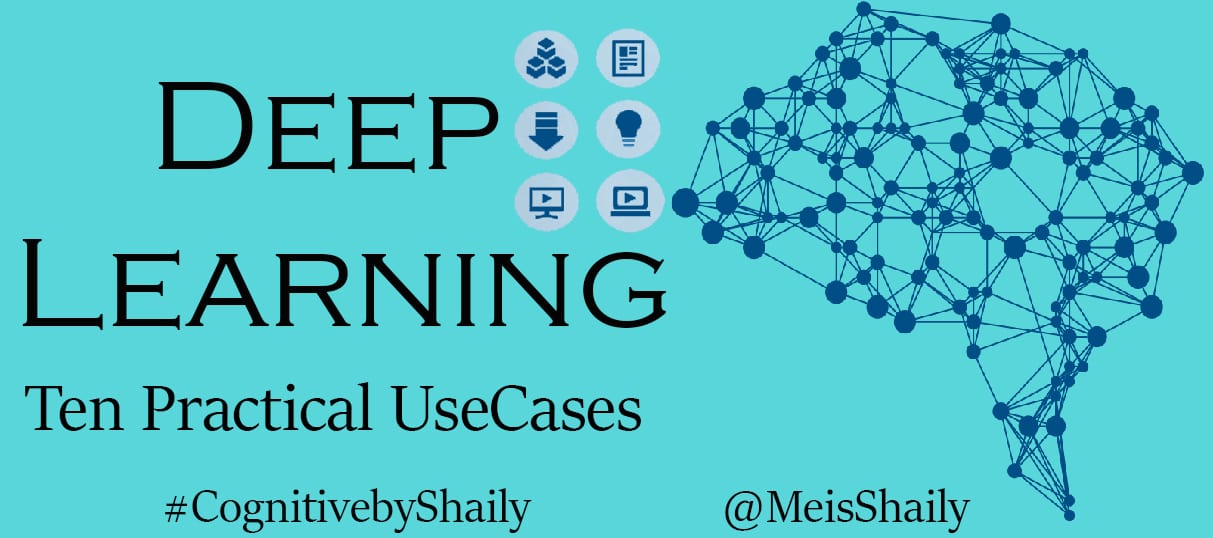Search by topic:

Deep learning has altered the way we operate in various ways. These are 10 practical use cases of Deep Learning in the last few years.
Most airports are now able to use deep learning techniques to identify and track persons of interest (e.g. terror suspects), track your luggage and detect any suspicious item very quickly. VPU (Vision Processing Unit)-enabled security cameras installed at airports generate alerts the moment they find someone leaving their luggage, thus making it possible to detect airport security threats within minutes. Installed in traffic scenarios, they can also recognize driver-less cars and help them find the right parking spots.
E-commerce sites, such as ebay and Amazon, are greatly benefited through Deep Learning. The entire session journeys of consumers are noted. The longer and more dynamic an event is, the greater is the propensity of people to click on the ‘buy now’ button. Once a particular consumer behaviour is noted in case of a range of products, the site is optimized to ensure that the next time a similar consumer visits, they get a more engaging experience so as to convert into a purchase within the shortest time.
For calendar coordination and scheduling, we have Clara and to gather staff report and consolidate meeting information we have Howdy. Google Now is the preferred program for keeping on schedule through proactive alerts, and for follow-ups after meetings, GridSpace Sift is a brilliant manager.
In several countries, chemical manufacturing units and aircraft units are installing machine learned sensors to get a complete idea of new challenges and insights. This has helped in reducing pitfalls and machine breakdown, thus considerably reducing costs and maintaining a healthy and hygienic environment in manufacturing units.
Geologists in Australia are currently using the procedure to locate minerals in relatively unexplored areas of the land.
Researchers today are very close to developing digital assistance to radiologists, ophthalmologists and other clinicians. Significant progress has been made in the field in the past years.
Visit a page of your favourite shopping site a few times and you will find that products as per your preference are displayed on your personalized page. Thus, your work of choosing and shopping has been made simpler.
Adoption of this machine-learning method has enabled pathologists working with computers, to outperform independently working pathologists. Machine learning has been adopted by
several breast cancer research organizations. The algorithms put together in the technologically enhanced machines help pathologists identify cancer cells through lymph node images.
Instead of conventional baby monitors that just track breathing and heart-rate of children, advanced baby monitors have hit the market that detect wrong postures and movements of the baby, generating alerts to parents from time to time. Thus, if your baby is accidentally sleeping on her stomach, mum can get an alert in the kitchen through the baby monitor and rush to her cot to perfect the posture. Furthermore, if a baby is sleeping on the edge of the bed, an alert is sent to the mum, so she can settle the baby before a fall.
A DNC (Differentiable Neural Computer) has been developed by Google’s DeepMind and today it is being installed within cars so that, if it is simply presented with maps, lines and stops, it
can take the shortest and simplest route to navigate from one point to another. Thus, making it possible for new drivers to make through new roads without difficulty. Machine learning through neural networks is picking up speed and increasing in popularity all over the globe. Continuous research and improvisations in the field can give us many more ways that deep learning can ease human involvement and accelerate productivity.
SHAILENDRA KUMAR
First published in Cognitive Today